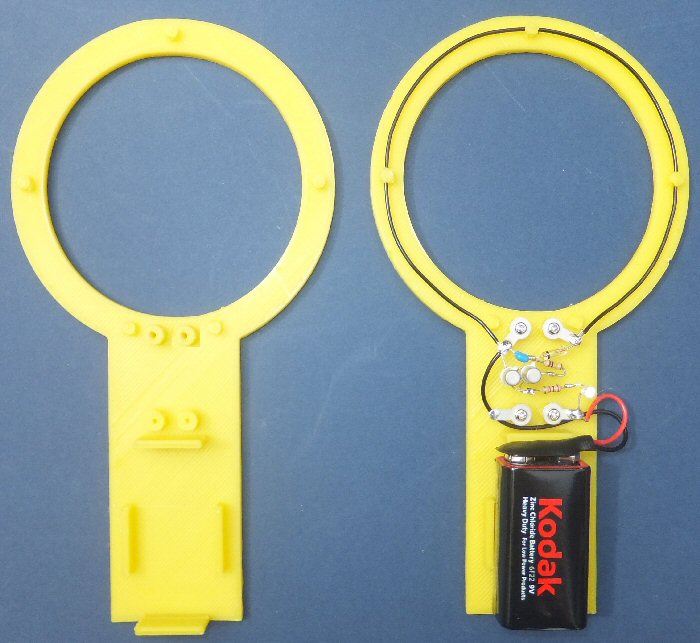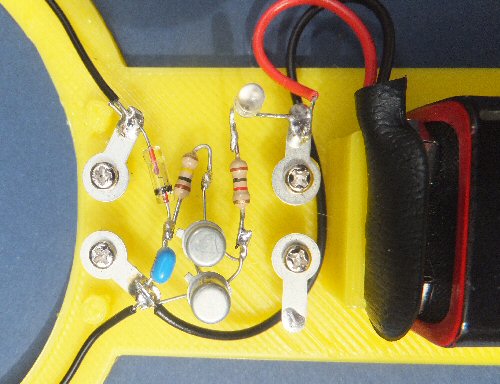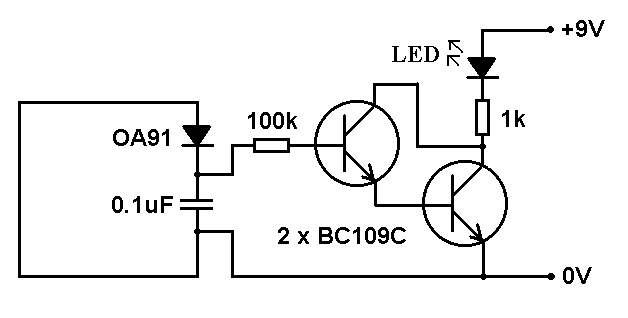High sensitivity demonstration shows
mobile phones generate radio frequencies (RF)
When you put the loop near to a mobile (that is texting or making a call) the LED will flash as the data is being sent.The radio waves created by the mobile phone pass through the loop (black wire in photo) inducing a voltage which triggers the transistor circuit,
lighting the LED. The 2 transistor circuit - called a darlington driver - provides a much greater sensitivity than the simple circuit (see link below)
but now needs a battery to power it.

Left shows the bare 3D printed former. Right shows the former with the components assembled

I built the circuit 'birds-nest' fashion out from the solder tags on the four 3D printed posts (Note: in this version I did not use one of the posts)
see images below and also the bottom of the page of the main article (left hand link below) for more details.
The battery can be secured in the 3D printed battery tray using an elastic band or double sided tape etc.

|
original IOP article |
simple detector (battery free circuit) |
3D .stl file 3D .g file 3D .scad file |
more soon |
more soon |
back to 3D page |
THE CREATIVE SCIENCE CENTRE
Dr Jonathan Hare University of Sussex, Brighton.
e-mail: j.p.hare@sussex.ac.uk
home | diary | whats on | CSC summary | latest news